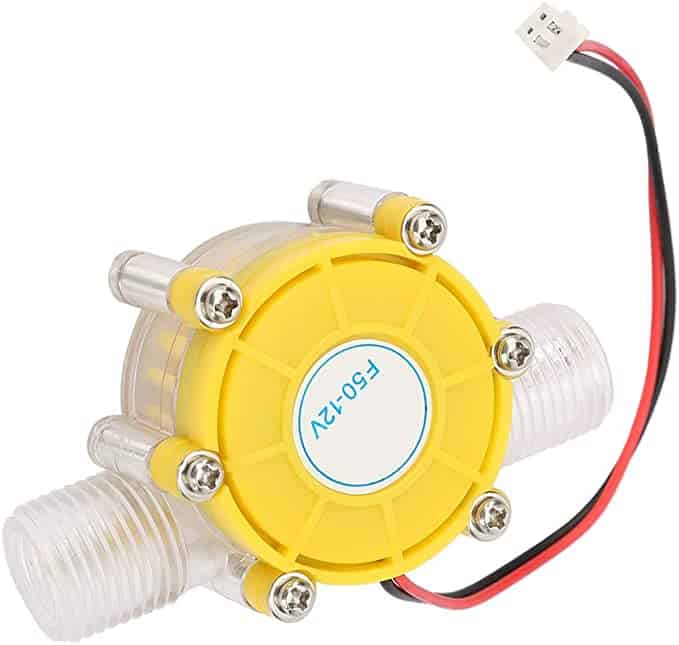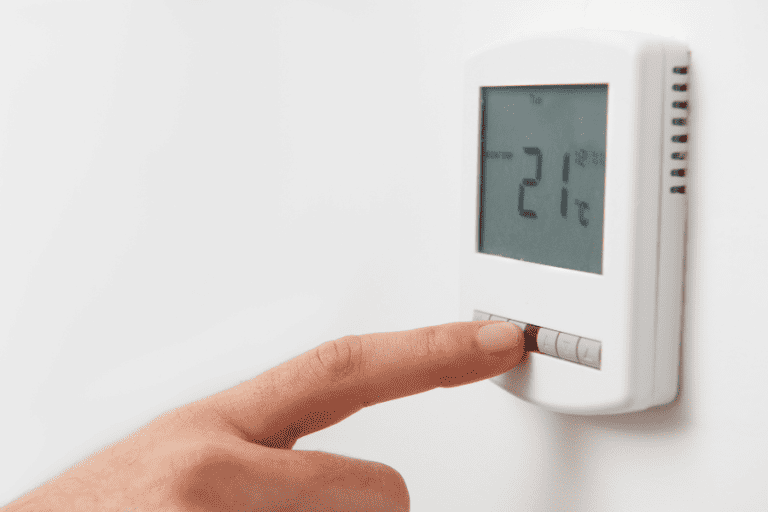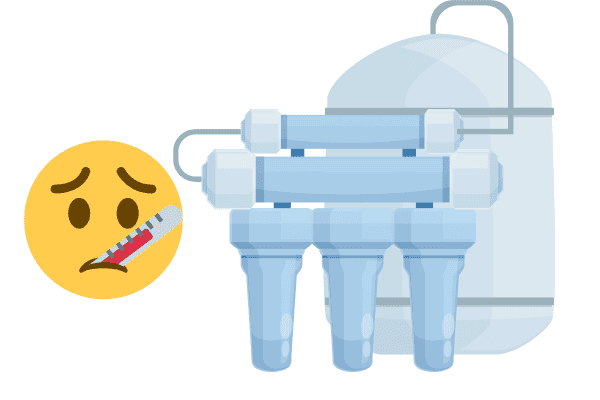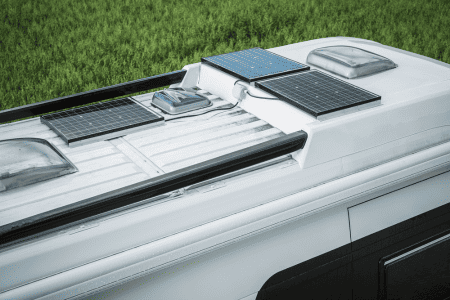Air Fountain System Review – Is It Worth Buying?
Atmospheric Water Generators: The Future of Sustainable Hydration
Have you ever wondered how we can generate water out of thin air? Enter the revolutionary concept of air fountains. These game-changing systems harness the power of compressed air to produce clean and sustainable water, offering a groundbreaking answer to address global water scarcity. With the h2o dynamo, an endless spring of water is created. This innovative product acts as a generator, utilizing compressed air to generate atmospheric moisture.
Air fountains, or h2o dynamos, utilize innovative techniques and generator technology that transform how we generate water. By extracting moisture from the atmosphere, these fountains provide a reliable freshwater origin without relying on traditional methods. With an air fountain system guide, step-by-step instructions, and video tutorials, anyone can learn how to set up and operate these incredible devices.
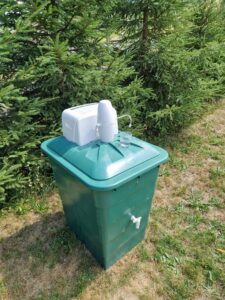
Whether you’re curious about how the H2O Dynamo works or interested in implementing an air fountain program in your community, this comprehensive guide has got you covered. Get ready to discover a great product that turns thin air into life-sustaining water using innovative techniques. This solution will help provide the essential resource of water.
So let’s dive in and explore the fascinating realm of water features together!
The Power of Air Fountain: Addressing Mega Drought Issues in the USA
Tackling severe drought conditions with efficient water harvesting
In the face of a growing water crisis and severe drought conditions, finding efficient ways to harvest water, such as the h2o dynamo, has become crucial. These innovative devices harness the power of nature to collect and store water, offering a sustainable solution for regions grappling with water shortage. The h2o dynamo can help ensure access to clean drinking water and support food production, making it a vital creator in combating water absence.
H2o dynamos utilize atmospheric moisture, extracting it from the air and converting it into usable water. By employing advanced technologies like condensation and filtration systems, these fountains can capture even the tiniest droplets of moisture, transforming them into a valuable resources for food creation.
Providing a viable resolution for water scarcity in drought-stricken regions
Water shortages have become increasingly common in many parts of the United States, leaving communities, agriculture, and food vulnerable. With traditional water sources running dry, finding alternative solutions like the h2o dynamo is imperative to help combat this issue.

With their ability to extract moisture from the atmosphere, also known as h2o dynamos, they provide an additional source of water that can supplement existing supplies. This helps alleviate immediate shortages and reduces dependency on scarce resources like groundwater or surface reservoirs. The air fountains, a device created for this purpose, can effectively address H2o scarcity and ensure food security.
Mitigating the impact of mega-droughts on agriculture and communities
Mega-droughts are prolonged periods of extreme dryness that pose significant challenges to agricultural productivity, water supply, and community well-being. As these events become more frequent due to climate change, addressing their impact on water shortages and storage becomes paramount.
Offer a potential game-changer in combating mega-droughts adverse effects. Farmers can mitigate crop losses caused by prolonged dry spells by providing an additional water supply for irrigation purposes. Moreover, help communities facing dwindling water reserves by generating water for essential needs like drinking and sanitation, thus ensuring food security and serving as a reliable device and guide.
A potential game-changer in combating water shortages across the USA
The United States’ water crisis demands innovative solutions to meet the growing water demand. A potential game-changer in this fight against water scarcity can also be used to provide food.
By harnessing atmospheric moisture, a device offers a decentralized approach to water supply, reducing dependence on centralized systems. This not only enhances emergency preparedness but also improves resilience during times of crisis. With air fountains, communities can take control of their water freedom and reduce reliance on external sources. A guide can also be provided to help communities effectively utilize this device.
Evaluating the Legitimacy and Worthiness System:
Assessing Credibility and Reliability
Such as an air fountain or water features; evaluating its credibility and reliability is essential. The technology or water generator has gained significant attention due to its potential benefits for improving air quality and overall well-being. However, before making any decisions, it’s crucial to consider the following factors:
-
Real-world Applications: One way to assess the system’s legitimacy is by examining its real-world applications. Look for success stories and case studies demonstrating how these devices and the water dynamo have been implemented in various situations. For instance, check if there are reports on air fountains being used in schools, hospitals, or public spaces. Additionally, you can refer to a guide for more information.
-
To ensure the water dynamo system is reliable, we need to know how it has been tested and validated. Look for independent testing agencies or research institutions that have evaluated these devices. Check if they have done thorough experiments or studies to support the manufacturers’ claims. Also, a guide on world war water can give us useful information on testing and validating air fountain systems.
-
User Experience: To evaluate credibility, ask people who have used air fountains for their opinions. Look for reviews and stories about both good and bad experiences. Also, check out a guide about using water dynamo air fountains during World War Water for more information on how well and reliably they work.
Weighing Pros and Cons
Before investing in a water dynamo, it’s essential to weigh the pros and cons associated with this device technology and refer to a guide on world war water.
Pros:
-
Improved Air Quality: Air fountains, powered by a water dynamo device, claim to remove pollutants from the environment, providing cleaner air for users. Use this guide for more information.
-
Health Advantages: Using a guide, a device, or a water dynamo can contribute to better respiratory health, reducing allergies or asthma symptoms.
-
Easy Access: Unlike traditional purification techniques that require filters or chemicals, offer a hassle-free solution with an easy-to-use device and step-by-step guide.
-
Cost-effective: Compared to other advanced purification systems available today, some offer a more affordable device option and serve as a helpful guide.
Cons:
-
Limited Effectiveness: Depending on the severity of the air pollution situation, may not be able to eliminate all contaminants. However, air fountains can effectively reduce air pollution.
-
Need for Maintenance Guide: A regular cleaning and maintenance guide is required to ensure optimal performance.
-
Iodine Works: Some device systems utilize iodine as part of their purification process. It’s essential to consider the potential health implications associated with this element. Check out our guide for more information.
By carefully considering these pros and cons, you can decide whether investing in a device aligns with your needs and situation. This guide will help you determine if the air fountain system suits you.
Reviewing the Effectiveness and Cost of the Air Fountain Water Harvester
Analyzing Efficiency and Performance Metrics
Several factors come into play. These innovative devices utilize a unique mechanism to extract moisture from the air, providing a sustainable water source. By understanding their effectiveness, we can evaluate their potential impact on addressing water scarcity issues and guide decision-making processes.
Harvesters use cooling coils and condensation chambers to take moisture from the air. Manufacturers measure their efficiency by how well they capture water vapor. They often specify how many liters or gallons they can collect daily. You must consider humidity, temperature, and air quality to know how well they work. Higher humidity makes more water, but colder temperatures can make less. Air quality also matters because some places have harmful stuff in the air. This guide can help you understand all these things.
Evaluating Cost-Effectiveness Compared to Traditional Sources
We compare the cost-effectiveness of air fountain water harvesters with traditional sources or technologies for getting water. Traditional methods can be expensive because of infrastructure costs. Air fountain systems are cheaper because they require minimal installation and can easily fit into existing structures. They are also easy to set up and integrate with existing infrastructure. It’s important to consider maintenance expenses when evaluating costs.
Understanding Long-Term Savings Potential
The long-term savings potential of water harvesters, a device, extends beyond reduced reliance on external sources. By utilizing these systems, individuals and communities can significantly contribute to environmental sustainability. Conserving water resources is crucial for future generations, and air fountain technology, a promising solution, offers a device to help achieve this goal.
The ability of a sustainable device to generate water from the atmosphere reduces the strain on natural water reserves. This device’s sustainable approach helps conserve existing supplies and decreases the need for energy-intensive processes like desalination or pumping from distant sources. Over time, this reduction in resource consumption can lead to substantial cost savings and a more eco-friendly footprint.
Providing a Sustainable Return on Investment
Investing in an air-fountain water harvester is not just about acquiring a product; it’s about embracing an innovative solution that provides both short-term benefits and long-term returns. These systems offer a sustainable return on investment by ensuring access to clean water while minimizing environmental impact.
By relying on air as a source of moisture, air fountain technology eliminates the need for extracting groundwater or surface water, which can deplete natural reserves over time. It reduces reliance on costly bottled water or other temporary solutions during drought or emergencies.
Understanding How the System Works:
Exploring the science behind converting air into usable water.
Have you ever wondered how it can magically transform thin air into clean, potable water? It may seem like something out of a sci-fi movie, but the process is based on a simple condensation principle. Let’s dive into the fascinating science behind this innovative technology.
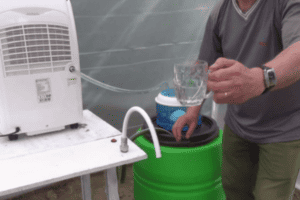
When warm air comes into contact with a cold surface, it loses its ability to hold moisture, resulting in condensation. The device utilizes a series of cooling mechanisms to create optimal condensation conditions.
The first step involves drawing in ambient air through vents or fans located on the device. Once inside, the air passes over a chilled surface or evaporator coil. As the warm air interacts with this cold surface, it rapidly cools down, causing water vapor in the mood to condense into liquid droplets.
These droplets then collect on the evaporator coil and gradually accumulate until they reach a sufficient volume. At this point, gravity guides the condensed water toward a collection reservoir or storage tank. Here, it undergoes further filtration and purification processes, including using compressed air, to ensure its safety for consumption.
It unveils the intricate process that powers an air fountain system’s functionality.
To fully comprehend how the system functions, let’s break down its essential components and their roles in generating clean drinking water from thin air:
-
Evaporator Coil: This component is crucial in cooling incoming warm air and facilitating condensation by providing a cold surface for moisture to cling onto.
-
Condensate Collection Reservoir: The condensed water droplets are collected in this reservoir or storage tank before undergoing additional purification steps to remove any impurities or contaminants.
-
Filtration System: To ensure that the generated drinking water is free from harmful substances, the system incorporates various filtration mechanisms such as activated carbon filters, UV sterilization, and reverse osmosis.
-
Water Dispensing Mechanism: Once the water has been filtered and purified, it is ready for consumption. Systems typically feature a user-friendly dispensing mechanism allowing individuals to access clean drinking water quickly.
I am breaking down critical components to generate clean, potable water from thin air.
Now that we understand the science behind a system and its intricate process, let’s take a closer look at the key components responsible for converting air into usable drinking water:
-
Air Intake System: This component ensures a steady ambient airflow into the device. It may consist of vents or fans strategically positioned to optimize air circulation.
-
Cooling Mechanism: The cooling mechanism employs various methods like refrigeration or thermoelectric cooling to lower the temperature of incoming warm air and create conditions conducive to condensation.
-
Condensate Management System: This system efficiently collects and channels condensed water droplets toward a designated reservoir or storage tank, preventing potential leaks or contamination.
DIY Water Generation: A Sustainable Answer
Empowering Individuals for Self-Sufficiency
Building your system empowers you to take control of your water generation. With step-by-step instructions, this program enables individuals to become self-sufficient in producing clean drinking water. No longer relying on external sources, you can have peace of mind knowing that you have a reliable and sustainable solution at your fingertips.
Promoting Clean Drinking Water for All
Access to drinking water is a fundamental human right. By engaging in DIY projects, you contribute to promoting this essential need. The air fountain’s water generator utilizes ingenious technology to purify and filter water, ensuring it meets the highest standards of cleanliness. Say goodbye to concerns about impurities or contaminants and enjoy the confidence of having healthy drinking water available whenever you need it.
Environmental Benefits of DIY
DIY offer more than just personal benefits; they also have positive environmental impacts. By generating your clean water, you reduce reliance on bottled water, contributing to plastic waste and carbon emissions from production and transportation. Embracing the air fountain program helps mitigate these environmental issues while providing an unlimited supply of fresh drinking water.
Community Engagement for Sustainable Solutions
The beauty of the air fountain program lies not only in its benefits but also in its potential for community engagement. Sharing knowledge and experiences with others fosters a culture of sustainability and encourages more comprehensive adoption of DIY solutions for clean water generation. Imagine a community coming together to build a network that supports each other’s quest for accessible and pure drinking water.
So how does one get started with building an air fountain? Here are some critical steps:
-
Gather the necessary materials: You’ll need items such as solar panels, a filtration system, piping, storage tanks, a water harvester, and a dynamo.
-
Set up the solar panels: Install the solar panels in an area that receives ample sunlight to power your air fountain system.
-
Connect the compressed air filtration system: Ensure that water passes through a reliable, compact design to remove impurities and ensure its safety for drinking.
-
Install the piping: Connect the various components of your air fountain using pipes, allowing water to flow smoothly from one stage to another.
-
Store the water: Use storage tanks or containers to store your air fountain’s clean, filtered water.
-
Maintain and monitor: Regularly check and clean your system’s components, including the air fountain and water harvester, to ensure optimal performance and longevity.
Building an air fountain may require technical knowledge, so don’t hesitate to seek guidance from experts or online communities specializing in DIY water solutions.
Alternatives to Water Harvester: Comparing Options
Exploring alternative methods of water harvesting and generation
Scarcity is a pressing issue in many parts of the world, making exploring alternative water harvesting and generation methods crucial. While air fountain systems have gained popularity as effective water harvesters, other technologies are worth considering. Let’s delve into the benefits and limitations of these alternatives and assess their suitability based on specific needs and conditions.
Comparing the advantages and limitations of other technologies
-
Rainwater Harvesting: One widely used method is collecting rainwater. It involves capturing rainfall from rooftops or other surfaces for later use. This approach is beneficial because it requires minimal infrastructure and can be easily implemented in urban and rural settings. However, its effectiveness depends on rainfall patterns, which may limit its reliability in arid regions.
-
Groundwater Recharge: Another option is replenishing groundwater sources through artificial means. This technique involves diverting surface water to infiltrate underground aquifers, helping to restore depleted groundwater levels. Groundwater recharge offers a sustainable resolution by replenishing natural reservoirs but requires careful planning to avoid contamination risks.
-
Desalination: Desalination becomes attractive in coastal areas where freshwater resources are scarce. This process removes salt from seawater, making it suitable for drinking or irrigation. Desalination plants can provide a consistent freshwater reserve; however, they require significant energy inputs and can be expensive to maintain.
-
Fog Harvesting: Fog harvesting harnesses moisture from foggy environments using specialized nets or mesh structures called fog collectors. These devices capture tiny droplets suspended in the air, converting them into usable water through condensation. Fog harvesting helps regions with high humidity but limited access to conventional water sources.
Assessing the suitability of different approaches based on specific needs and conditions
The suitability of each water harvesting method depends on various factors, including climate, geographical location, and available resources. Here’s a breakdown of how these alternatives compare:
-
Air Fountain Systems: Air fountain water harvesters excel in regions with low humidity. They utilize atmospheric moisture to generate water by condensing air particles. This highly efficient technology can operate even in arid environments where other methods may struggle.
-
Rainwater Harvesting: Ideal for areas with moderate to high rainfall, rainwater harvesting provides a sustainable source of water. It is particularly effective in residential settings, where rainwater can be collected from rooftops and stored for non-potable uses such as gardening or toilet flushing.
-
Groundwater Recharge: Groundwater recharge is suitable for regions with adequate surface water sources that can be directed towards underground aquifers. It helps maintain ecological balance while ensuring a long-term groundwater supply for communities reliant on wells or boreholes.
-
Desalination: Coastal areas facing severe freshwater shortages benefit from desalination plants. Although energy-intensive, desalination offers a reliable origin of clean water when traditional options are limited.
Investing in the Future with Air Fountain
Investing in the Air Fountain system is a smart move for those looking to address mega-drought issues in the USA. With its innovative technology and sustainable approach, this water harvester offers a promising answer to water absence. Let’s recap some key points:
-
The Power of Air Fountain: Addressing Mega-Drought Issues in the USA The Air Fountain system has been designed specifically to tackle the challenges posed by mega-droughts in the USA. Harnessing atmospheric moisture provides a reliable source of clean water, even in arid regions.
-
Evaluating the Legitimacy and Worthiness of the Air Fountain System Extensive research and testing have confirmed the legitimacy and worthiness of the Air Fountain System. It has proven to be an effective solution for water generation, offering a sustainable alternative to traditional methods.
-
Reviewing the Effectiveness and Cost of the Air Fountain Water Harvester The effectiveness of the Air Fountain system lies in its ability to extract moisture from the air efficiently. This process ensures a constant water supply and reduces dependency on conventional sources such as groundwater or surface water. Compared to other alternatives, it offers a cost-effective solution for long-term water security.
-
Understanding How the Air Fountain System Works The working principle behind the Air Fountain system is simple yet ingenious. Using condensation techniques, it captures airborne moisture and converts it into usable water through advanced filtration. This technology allows individuals and communities alike to generate their water sustainably.
-
DIY Water Generation with the Air Fountain Program: A Sustainable Solution The Air Fountain program empowers individuals with DIY capabilities, enabling them to take control of their own water generation needs. ProvidingProviding step-by-step instructions and necessary equipment promote self-sustainability while reducing reliance on external resources.
-
Alternatives to Air Fountain Water Harvester: Comparing Options While there may be other options available for water generation, the Air Fountain system stands out due to its efficiency, cost-effectiveness, and environmental friendliness. When considering alternatives, evaluating their long-term viability and environmental impact is crucial.
Investing in the Air Fountain system secures a sustainable water source and contributes to a greener future. By harnessing the power of atmospheric moisture, we can mitigate the effects of droughts and ensure water security for generations to come.
FAQs and link to The Air Fountain system
Q: How much water can an Air Fountain system generate?
The amount of water an Air Fountain system generates depends on humidity levels and system capacity. On average, a standard unit can produce several hundred gallons per day.
Q: Is the Air Fountain system suitable for all climates?
While the Air Fountain system is designed to work effectively in most climates, extremely arid regions with deficient humidity levels may pose challenges. However, advancements in technology are continually improving its performance in such conditions.
Q: How does the cost of an Air Fountain compare to traditional water sources?
Compared to traditional water sources like groundwater or surface water extraction, investing in a Fountain system offers significant cost savings over time. It eliminates ongoing expenses associated with those sources while providing a reliable and sustainable alternative.
Q: Can I install an Air Fountain system without professional assistance at home?
Yes! The Air Fountain program encourages DIY installation. With detailed instructions and support materials provided, individuals can easily set up their systems without requiring professional assistance.
Q: Are there any maintenance requirements for an Air Fountain system?
Regular maintenance is necessary for the optimal performance of your Air Fountain system. This typically involves filter replacements, cleaning procedures, and periodic inspections. Detailed guidelines will be provided along with your purchase.
Investing in an Air Fountain system aids you personally and contributes to a more sustainable future. Take control of your water generation needs and secure a reliable source for years.
We’re reader-supported. We may earn an affiliate commission when you buy through links on our site.

